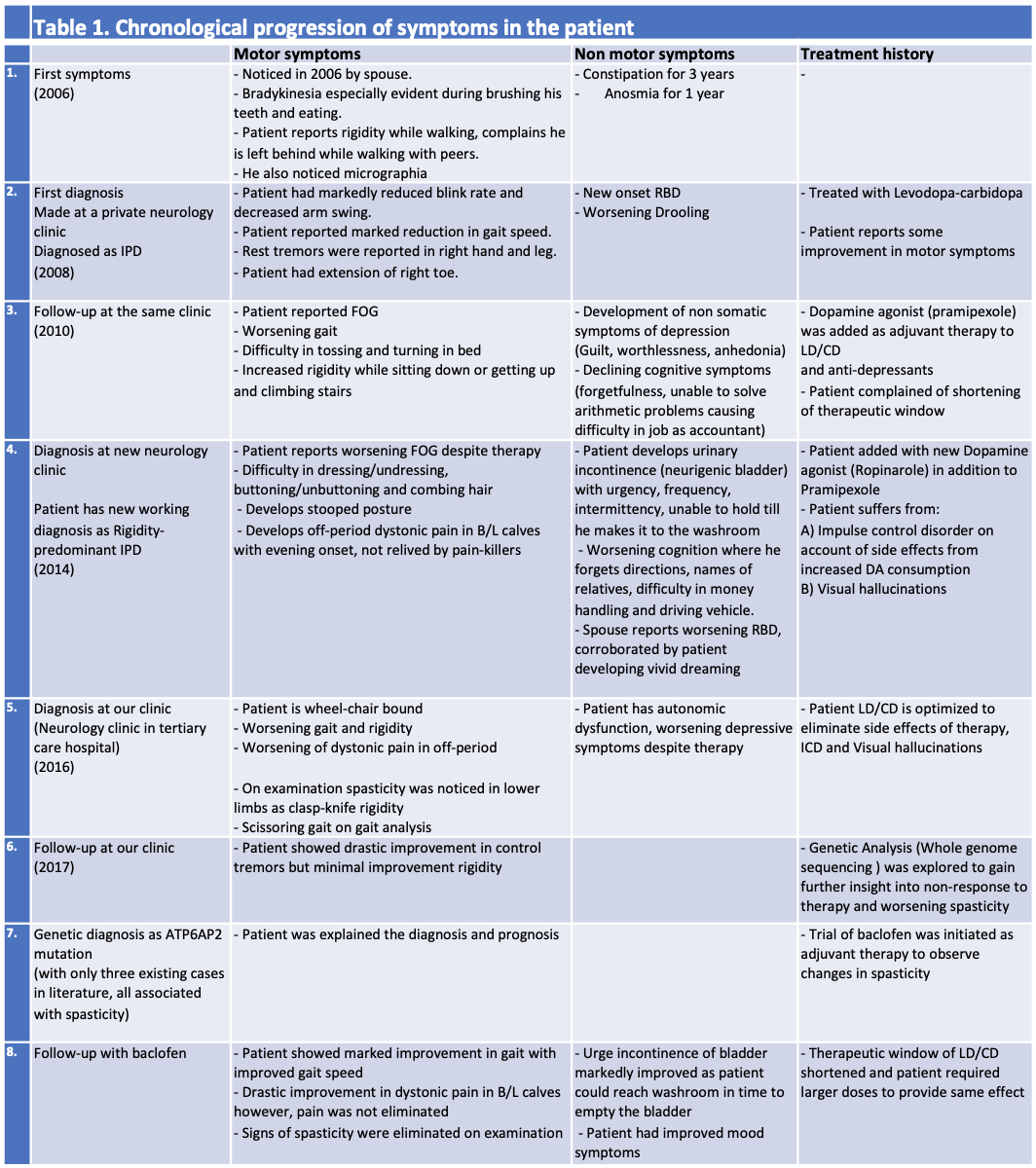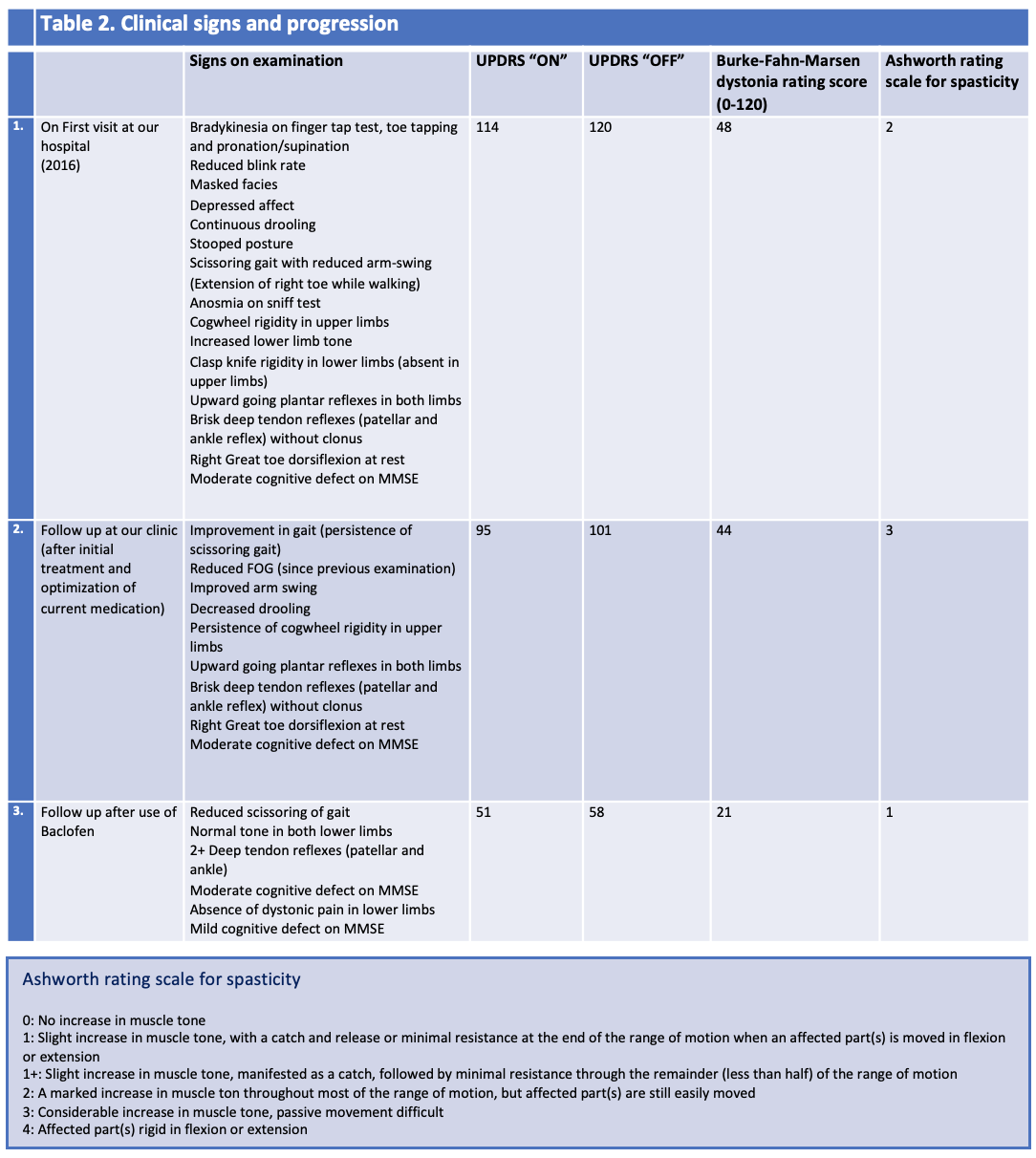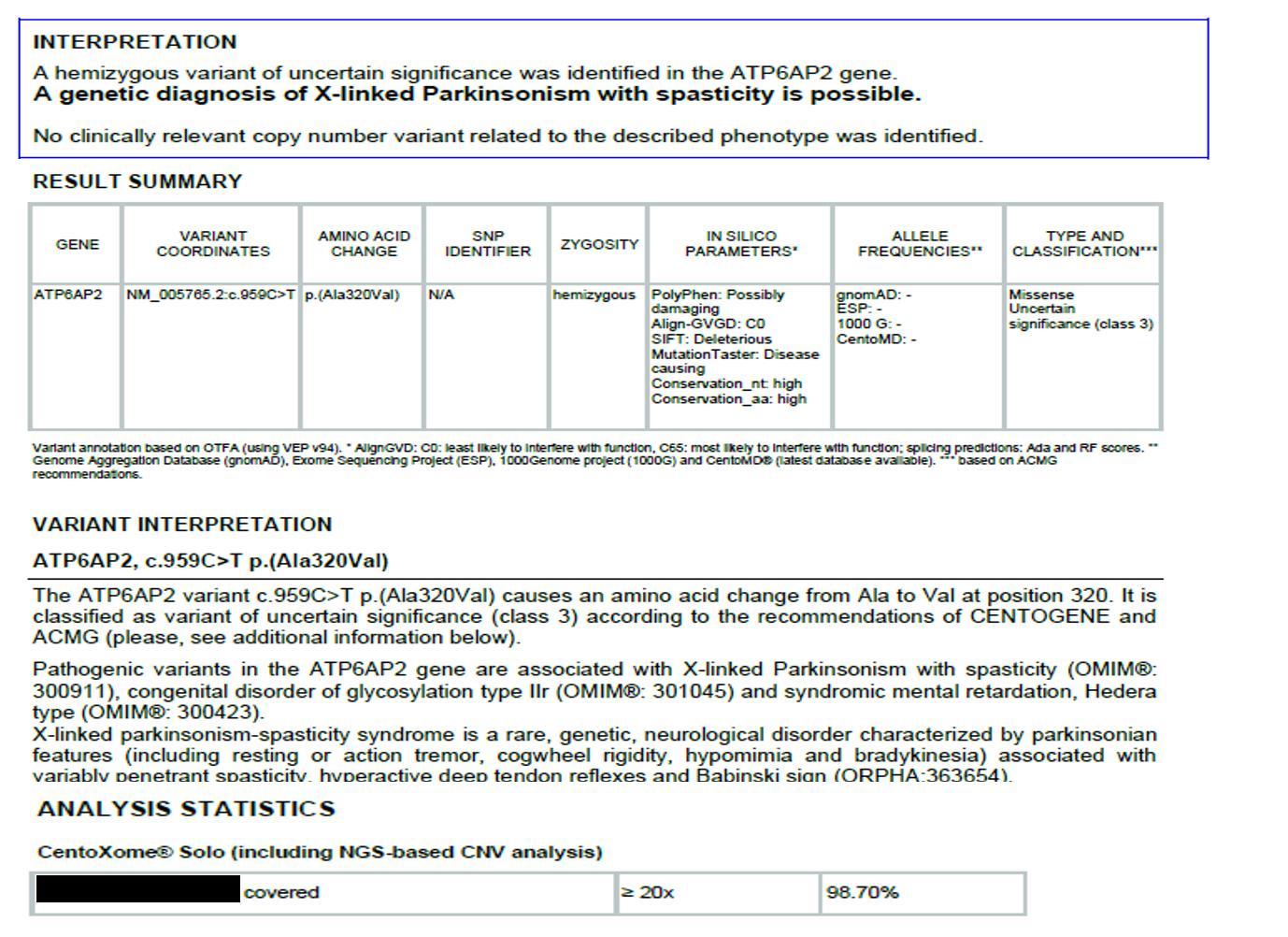Category: Parkinson's Disease: Genetics
Objective: Genetic analysis of Parkinson’s Disease (PD) with features of spasticity by Whole Exome Sequencing (WES) and use of its result for treatment modification to treat PD with atypical signs (here, spasticity).
Background: PD, although largely idiopathic, has genetic etiology seen in familial PD and less commonly as genetic mutations causing sporadic mutations that manifest as PD later in life. So far, 18 loci and 8 validated genes have been identified by Genome-Wide Association Studies (GWAS). Genetic analysis is seldom used in routine testing as PD diagnosis is primarily clinical, sometimes supported by imaging.
Method: One such mutation in PD reported as ATP6AP2 gene with previously determined X-linked recessive inheritance causes loss of function mutation leading to endolysosomal dysfunction acting by renin/prorenin receptor and is hypothesized to precipitate tauopathy causing PD in a rare familial case.
We report the first case of sporadic ATP6AP2 mutation reported in Asia causing rigidity-predominant PD with signs of spasticity in a patient of North India and its management using an anti-spasmodic drug. Whole Exome Sequencing (WES) including NGS and Copy Number Variant Analysis (CNV) was done [Figure 2]
A detailed clinical history produced chronologically [Table 1] [Figure1] along with detailed treatment history of patient [Table 2] can be referred to see the need for genetic testing along with the treatment modification made based on the existing syndrome.
Results: Patient’s UPDRS “On” and “Off” parameter improved by 15%, 16.6% respectively by regular PD treatment optimization and by 51.6%, 55.2% improvement with alleviation of spasticity by baclofen. Dystonia improved by 8.3% with drug optimization and by 56.2% with the use of antispasmodic drugs. Treatment plan of patient benefitted greatly by tailoring drugs specific to the mutation.
Conclusion: Genetic Analysis maybe considered in PD with atypical signs not controlled or have plateaued by regular medical treatment. Results of such analysis can be used to try newer neurological drugs and see their effects on atypical signs.
Future discussions are promoted on spreading awareness among physicians to identify atypical PD signs, and family history to check for inheritance patterns. Subsequently, we must also actively report rare mutations to help in further data collection and description of disease progression by particular mutations.
References: Korvatska O, Strand NS, Berndt JD, Strovas T, Chen DH, Leverenz JB, Kiianitsa K, Mata IF, Karakoc E, Greenup JL, Bonkowski E, Chuang J, Moon RT, Eichler EE, Nickerson DA, Zabetian CP, Kraemer BC, Bird TD, Raskind WH. Altered splicing of ATP6AP2 causes X-linked parkinsonism with spasticity (XPDS). Hum Mol Genet. 2013 Aug 15;22(16):3259-68. doi: 10.1093/hmg/ddt180. Epub 2013 Apr 16. PMID: 23595882; PMCID: PMC3723311.
To cite this abstract in AMA style:
K. Shukla, N. Sawal. First case of sporadic ATP6AP2 Mutation reported in Asia in a Parkinson’s Disease patient [abstract]. Mov Disord. 2023; 38 (suppl 1). https://www.mdsabstracts.org/abstract/first-case-of-sporadic-atp6ap2-mutation-reported-in-asia-in-a-parkinsons-disease-patient/. Accessed December 29, 2025.« Back to 2023 International Congress
MDS Abstracts - https://www.mdsabstracts.org/abstract/first-case-of-sporadic-atp6ap2-mutation-reported-in-asia-in-a-parkinsons-disease-patient/



